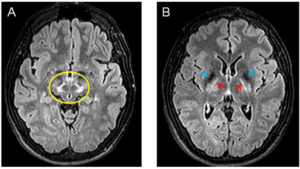(Formerly #35)
I would like to give some added traction to what I regarded as a very important post by Elizabeth yesterday:
www.facebook.com/groups/MagnesiumAdvocacy/1049485821786153/?notif_t=like_tagged¬if_id=1466274944603356
The ancient article (1973) that she posted is here:
Evans, J. L., Abraham, P.A. (1973). “Anemia, Iron Storage and Ceruloplasmin in Copper Nutrition in the Growing Rat.”
This more contemporary article (2014) was provided by Arne Kaminsky:
Manto, M. (2014). “Abnormal Copper Homeostasis: Mechanisms and Roles in Neurodegeneration.”
www.mdpi.com/2305-6304/2/2/327/htm
The point of this post is to underscore the importance of ceruloplasmin. You are not anemic, rather you have low functional ceruloplasmin.
Let me share a recent client’s personal experience re this iron issue. What follows are set of blood panel markers, Pre- and Post-Cp Protocol:
- Mag RBC (Old) 5.1 (New) 5.4
- Ceruloplasmin (Old) 22.5 (New) 30.8
- Serum Iron (Old) 55 (New) 150
- Serum TIBC (Old) 285 (New) 334
- % Saturation (Old) 19% (New) 45%
- Serum Ferritin (Old) 53 (New) 52
What I want to make clear, anyone want to take iron supplements to correct their anemia; they should re-think their approach especially when you look at the rise of iron in the blood and the static level of ferritin.
Why I made the important point about Elizabeth’s post and Arne’s contribution is that ceruloplasmin (Cp) guarantees iron mobilisation.
It ensures that iron is in active circulation around the body, just as Mother Nature intended it to be. This was very clearly understood up until the early 1980’s. A lot has happened since then.
What’s important to note is that, practitioners have an obsession over iron in storage, which is what ferritin tells us. Focusing on ferritin, stored iron, does not tell us what is going on with the active iron metabolism.
By the time ferritin shows up in the blood, after it’s filled in the liver, the spleen and the bone marrow, it’s too late. Each ferritin molecule can hold up to 4,500 iron atoms, which is a major source for oxidative stress! And that’s what Sir Douglas B. Kell, PhD’s research is all about:
Kell, D.B. (2009). “Iron behaving badly: inappropriate iron chelation as a major contributor to the aetiology of vascular and other progressive inflammatory and degenerative diseases.” https://pubmed.ncbi.nlm.nih.gov/19133145/
Ferritin is pathophysiology, not a sign of vitality.
So with that in mind, let me share a series of key recommendations and please know that I am serious in this set of closing remarks:
- Please get a full Monty Iron Panel to assess your true iron status:
requestatest.com/mag-zinc-copper-panel-with-iron-panel-testing - Please get the panel interpreted by someone who knows what ceruloplasmin is and knows how important magnesium is to this process of iron metabolism.
- Please pursue the Mother Nature Cp protocol for 3-6 months before re-testing. Also before you take any more iron supplements to see if your iron shoots up too.
The way practitioners utilise ferritin only to access your iron status is not the way forward. It is like we do not allow a TSH only test for your thyroid. It is time to demand a better understanding of what is really going on with your iron, especially since it is the base cause of oxidative stress. Out of control oxidative stress feeds all chronic diseases.
My obsession over iron is because iron eats magnesium for lunch. The activation of 3,751 enzymes depends on magnesium as Mother Nature intends.
In my humble opinion, my understanding of anemia is that it is a clinical sign of inflammation and/or chronic disease.
A votre sante!
MORLEY M. ROBBINS
For Facebook Discussion:
www.facebook.com/groups/MagnesiumAdvocacy/permalink/1050152505052818/


